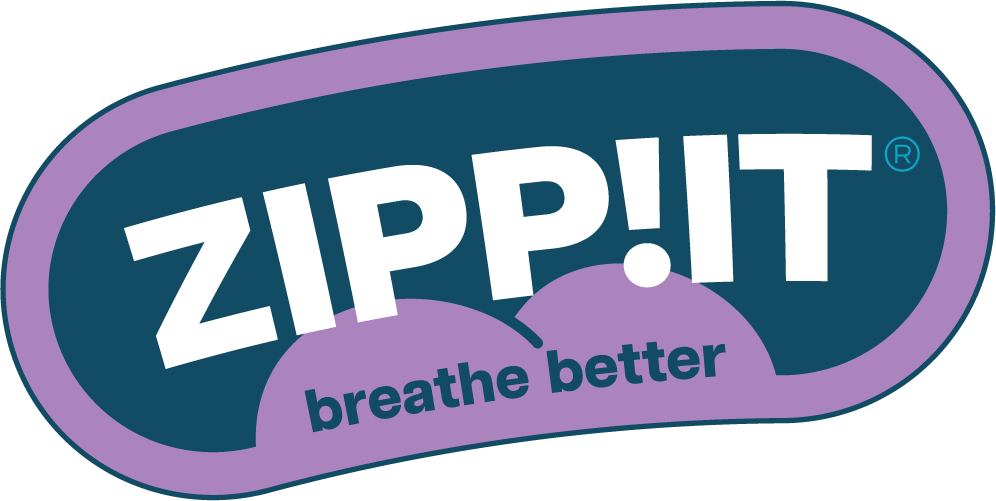More air, more speed: how nasal strips help cyclists perform
Nasal strips are rapidly gaining popularity in the cycling world. And for good reason—every small advantage counts!
These simple aids may seem insignificant, but they can have a significant impact on your breathing and, consequently, your performance. By keeping your nostrils open, they improve airflow and increase your oxygen intake during intense exertion. For cyclists constantly seeking ways to improve, nasal strips offer a simple yet potentially effective solution.
In this article, we dive deep into the world of nasal strips for cyclists: how they work, what the science says, when they’re most useful, and how to use them optimally during different forms of cycling. Whether you’re a pro or an enthusiastic amateur, after reading this you’ll understand why these small aids can have a big impact on your breathing and performance on the bike.

The Science Behind Nasal Strips and Their Effect on Cycling
Nasal strips are small, adhesive strips placed across the bridge of your nose. The principle is surprisingly simple: by pulling your nasal wings open, they reduce resistance in your airways and allow for better airflow. And that’s exactly what you need during intense exercise, when every breath counts.
Your nasal wings are made of cartilage and can be pulled inward during heavy breathing, which limits your airflow. This is called ‘nasal valve collapse’ and reduces your breathing efficiency. Nasal strips mechanically keep your nasal wings open, keeping your airway clear even during strenuous effort.
For cyclists, this offers several advantages:
- Improved airflow during high-intensity efforts
- Possible reduction in the work of breathing
- More efficient breathing during prolonged exertion
- Potentially improved performance, especially during critical moments
An important aspect of nasal strips is that they are specifically designed to support the natural anatomy of your nose without forcing it. The better strips are made from hypoallergenic materials that sit comfortably on your skin, even when you sweat during intense training or races.
Keep in mind: nasal strips are not a miracle cure that will suddenly bring about drastic performance improvements. They work best as part of a broader strategy to optimize your breathing. In cycling, where margins are often small, nasal strips can provide just that extra bit of air you need during crucial moments.
Research shows that the effectiveness of nasal strips can vary depending on your individual nasal anatomy and breathing patterns. Some cyclists notice an immediate difference, while others experience more subtle effects. That’s why it’s important to experiment during training before using them in races.
The Relationship Between Nasal Strips and Oxygen Uptake in Cycling
The efficiency of oxygen uptake is crucial for every cyclist. During intense exertion, your need for oxygen increases dramatically. How well your body can absorb and use oxygen (your VO2 max) largely determines your endurance and performance.
Nasal strips can contribute to improved oxygen uptake in several ways:
- By opening your nostrils wider, they reduce resistance when inhaling
- This can lead to deeper and more efficient breathing
- With each breath, potentially more oxygen can be absorbed
- More efficient breathing requires less energy, leaving more energy available for the actual effort
Studies on the effectiveness of nasal strips show mixed results. Some research points to a measurable improvement in oxygen uptake, while other studies mainly show subjective improvements in breathing comfort. What is consistent: cyclists who normally breathe through their nose during less intense efforts often benefit from nasal strips.
The benefits are most noticeable in specific situations:
- During prolonged exertion at moderate intensity
- For cyclists who tend toward nasal breathing
- In situations where breathing efficiency is crucial, such as during climbs
- For cyclists with mild nasal obstructions
It’s important to note: oxygen uptake depends not only on the amount of air you inhale, but also on how efficiently your lungs can extract that oxygen and how well your heart and blood vessels can transport it to your muscles. Nasal strips are thus one link in a more complex chain of physiological processes.
Cyclists who want to optimize their oxygen uptake can see nasal strips as one of the tools in their arsenal. They are relatively inexpensive, easy to use, and have little to no downside. An accessible option to experiment with during training.
The Benefits of Nasal Strips in Endurance Sports and Cycling Specifically
Nasal strips offer several benefits that are specifically relevant for cyclists. As an endurance athlete, you place special demands on your respiratory system due to the prolonged and often intense effort you put in.
One of the most direct benefits is the potential reduction of respiratory fatigue. During long efforts, the muscles involved in your breathing can become fatigued. By reducing resistance in your nasal passage, nasal strips may delay this fatigue, resulting in:
- Longer periods of efficient breathing
- Improved endurance during longer rides
- Less energy lost to the work of breathing itself
- Better maintenance of optimal breathing patterns
Another benefit is the support nasal strips can provide in maintaining nasal breathing. Many coaches and breathing experts suggest that breathing through your nose offers advantages over mouth breathing, including:
- Better filtration of inhaled air
- More effective humidification of inhaled air
- More stable breathing patterns
- Potentially more efficient oxygen uptake at lower intensities
Cyclists who cover long distances, such as during gran fondos or stage races, may benefit from consistent use of nasal strips. The cumulative effects of even slightly more efficient breathing can become significant over long distances.
A frequently underestimated benefit is the possible improvement in breathing comfort. More comfortable breathing can lead to:
- Reduced perception of effort
- Improved focus on technique and strategy
- Better performance during critical race moments
- Faster recovery between intense efforts
It’s important to emphasize: nasal strips work best as part of a holistic approach to breathing optimization. This also includes breathing techniques, core training, and overall fitness improvement. The strips are not a replacement for these fundamental aspects, but a valuable addition for cyclists who want to maximize their breathing efficiency.
Techniques for Optimal Nasal Breathing During Effort on the Bike
The way you breathe has a huge impact on your performance on the bike. Nasal breathing offers specific benefits that more and more cyclists are discovering, especially in combination with nasal strips.
The basic principles of effective nasal breathing start with learning the right technique:
- Diaphragmatic breathing: Breathing from your diaphragm rather than shallowly from your chest
- Rhythm and timing: Synchronizing your breathing with your cadence
- Nasal breathing at lower intensities: Trying to breathe through your nose for as long as possible
- Combined breathing at higher intensities: In through your nose, out through your mouth
Want to implement these techniques? Consider this training plan:
- Start with nasal breathing techniques during easy endurance rides
- Use nasal strips to facilitate the transition to more nasal breathing
- Gradually build up to applying these techniques at higher intensities
- Integrate specific breathing work into your warm-up and cool-down
An important aspect is finding the right balance between nasal and mouth breathing. At lower intensities (up to about 70-75% of your maximum heart rate), you can often breathe mainly through your nose. As intensity increases, a combination of nasal and mouth breathing becomes physiologically necessary to meet your oxygen needs.
Nasal strips can play a crucial role here by:
- Facilitating nasal breathing, even at higher intensities
- Raising the threshold at which you need to switch to mouth breathing
- Improving the efficiency of combined breathing during intense efforts
- Supporting a quicker return to nasal breathing during recovery moments
Want to perfect these techniques? You may benefit from using a heart rate or power meter to objectively determine at which effort levels you switch from pure nasal breathing to combined breathing. This awareness helps systematically expand your ‘nasal breathing zone’.
For competitive cyclists, strategically employing nasal breathing techniques in combination with nasal strips can help maintain calm and focus during crucial moments, such as approaching a climb or during a sprint.

Maximize Your Performance with the Right Nasal Strips for Cycling
After exploring the science and benefits, it’s time to get practical. Choosing the right nasal strips and using them correctly makes a big difference in effectiveness.
When selecting nasal strips for cycling, there are several factors to consider:
- Size and fit: Choose strips that suit the size and shape of your nose
- Adhesion: Look for strips that stay in place, even during sweaty efforts
- Material: Hypoallergenic materials are essential for sensitive skin
- Stiffness: The strip should be stiff enough to keep your nasal wings open
- Discretion: For some cyclists, appearance matters, with transparent strips being less noticeable
For optimal results, it’s important to apply nasal strips correctly:
- Make sure your nose is clean and dry before applying the strip
- Place the strip precisely over the widest part of your nasal wings
- Press the strip firmly to ensure good adhesion
- Test the placement by taking a deep breath to check if your nostrils stay open
Experienced cyclists have found that timing is also important. It can be helpful to:
- Apply the strips before you start sweating
- Replace them during longer rides or in extreme weather conditions
- Test different types during training before using them in races
- Carry spare strips for longer rides or in case of loss
To get the most out of nasal strips, it’s advisable to integrate them into your broader breathing strategy. Be mindful of your breathing technique, regularly do breathing exercises alongside your cycling training, and pay close attention to how your body responds to different combinations of effort and breathing patterns.
Different cyclists have different experiences with nasal strips. Some notice a direct and significant difference, while others report more subtle effects. Therefore, evaluate your own experiences and adjust your use based on what works best for you.
Breathe Freely, Ride Faster: Make the Switch to Improved Performance
The impact of effective breathing on your cycling performance can hardly be overstated. Nasal strips are a simple yet potentially powerful way to optimize your breathing while riding.
What makes these small aids so interesting is their accessibility: affordable, easy to use, and immediately integrable into your existing training and racing routine. Without drastic changes, you can potentially experience a noticeable improvement in your breathing efficiency.
Are you serious about improving your performance? Then experimenting with nasal strips is a logical step. Start by trying them during training—pay attention to how your breathing feels, how your endurance develops, and whether your effort feels different. Remember that individuality plays a role: what works for some riders may have a different effect for you.
Take the time to find the right nasal strips that suit your specific needs. Combine the use of strips with conscious attention to your breathing technique, and you’ll create a powerful combination that maximizes your breathing efficiency.
The next time you get on your bike, consider how a small change in your breathing strategies can make a big difference. Whether you’re training for an important race, aiming to break personal records, or just want to ride more comfortably—the road to better performance may start with something as simple as a nasal strip and a renewed focus on optimal breathing.
Take control of your breathing today, and discover how it can take you to new heights. Because in a sport where marginal gains make the difference between good and great, your breathing might just be the key to your next breakthrough.


